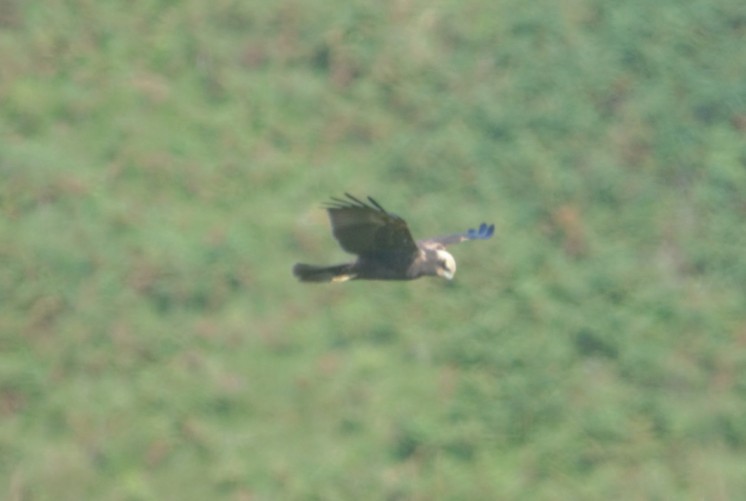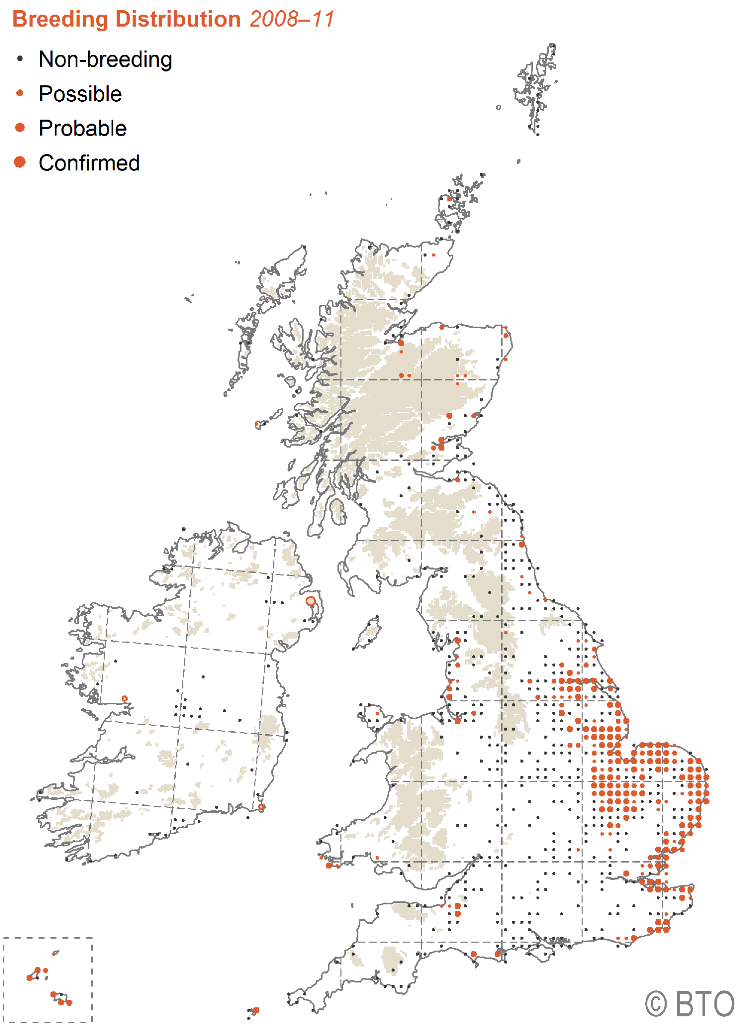Marsh Harrier on Arran
Reports

On 29 August a juvenile Marsh Harrier was seen by Matt Frances and his family near the summit of the String. It was photographed by son, Daniel. This is the first time that this species has been photographed on Arran. While not an award-winning photograph, it was certainly more than good enough to confirm the identity of this rare vagrant to Arran, dark brown in colour with creamy white crown and throat.
The Arran Natural History Society records go back over forty years. Marsh Harrier appears in only three previous occasions. In 1988 a female was reported on 8 May on the String. In 2004 Audrey Walters, the previous bird recorder, in the annual report for that year wrote “There was real excitement on 19 August when a juvenile Marsh Harrier which had been radio-tagged on Tayside overflew Lamlash before making its way down to Carlisle and then over to Newcastle-on-Tyne. As far as I know nobody actually saw it, but some people tracked it on the website”. In 2019 a female type/juvenile was seen at Machrie Farm on 15 May.
In Scotland, Marsh Harrier is a scarce migrant breeder with a stronghold in the reed beds of Tayside. Small, though variable, numbers of passage birds have been noted in both spring and autumn in most recording areas, with the majority along the east coast. There are few Scottish winter records.
In the British Isles, as can be seen on the British Trust for Ornithology map, Marsh harriers are mainly found in eastern and south-east England in their preferred habitats of reedbeds and marshes, as well as farmland near wetlands.
